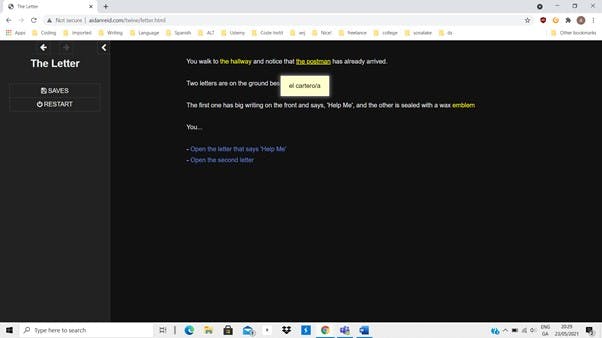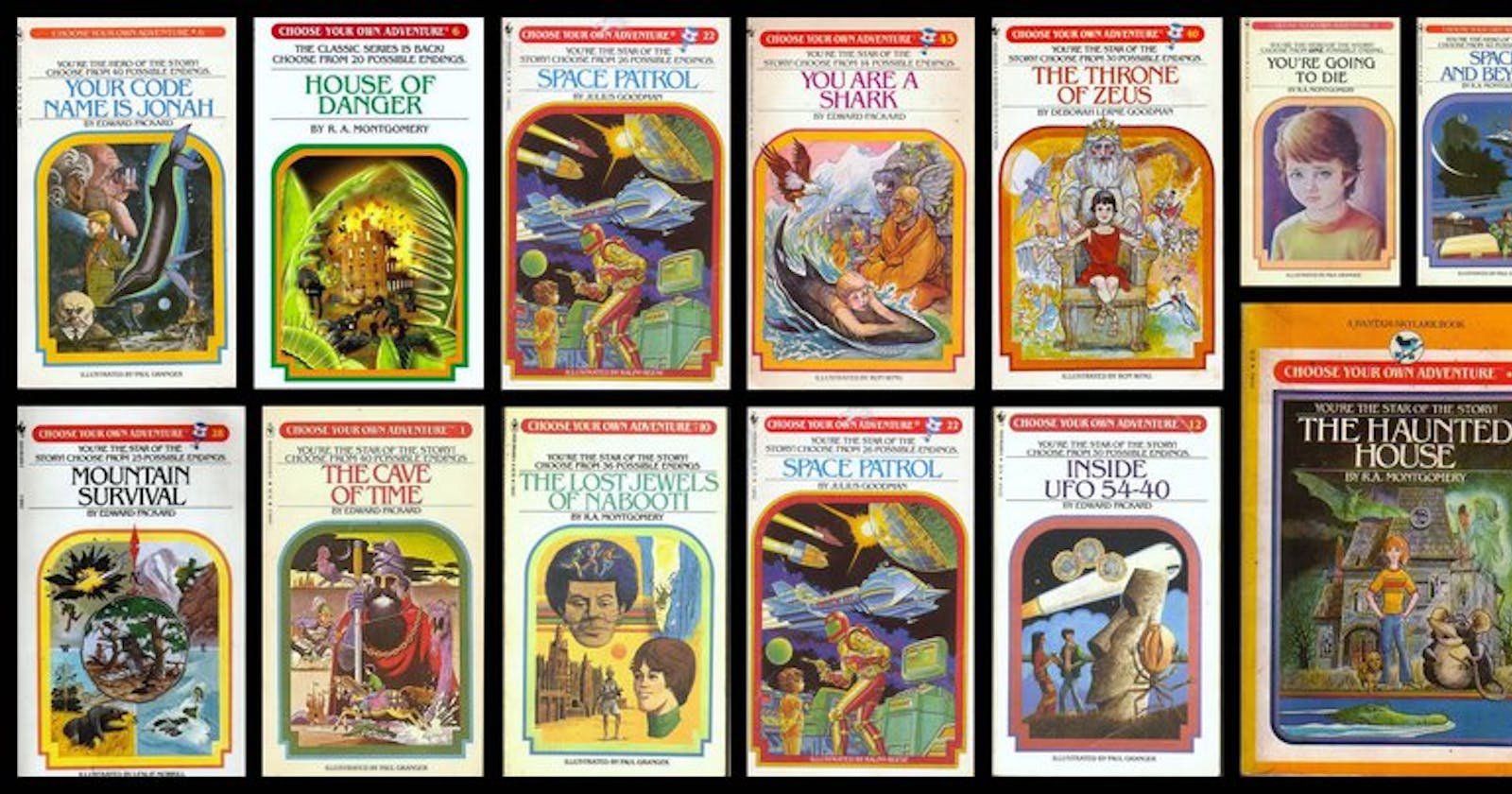As a teenager, I loved immersing myself in Choose Your Own Adventure (CYOA) stories.
To the uninitiated, these are stories where you - the reader - can choose the destiny of the protagonist. Each choice made takes the story in a different direction. A simple example:
You enter a dark room. A flickering lightbulb hanging from the ceiling is the only source of light. There are two doors ahead. On the surface of the door on the left, you see red streaks, the colour of blood - the wood appears scratched. On the door to the right, there is a beam of light underneath. A shadow flits across, and there is a growling noise. You:
- Open the door on the left (turn to page 87)
- Open the door on the right (turn to page 154)
- Call out for help (turn to page 13)
As a young impressionable reader, I became absorbed by such stories and felt like every decision I made counted. One wrong move or sloppy mistake and the orc or some other fiendish creature would cut my story short. The beauty of the CYOA arcs, however, was that I could retrace my steps in a tight spot, and look at other options - my very own 'Sliding Doors' moments.
Recently, I've been thinking about how those older books, and specifically the format, could be applied and used in this digital age. Flicking pages no longer need apply, replaced with click-linking to pages. Saving progress in a story is made easier and embedding audio/video can further enhance the reader experience.

At the beginning of this year I had the opportunity to work as a writer for Larian Studios on their eagerly anticipated Baldur's Gate 3 game. In-game narration and player choice is a key component for such games and when delivered in a seamless and compelling fashion, can add depth and colour to the game characters and the story. Your choices matter.
I created my own CYOA short story here which was inspired by the world of Baldur's Gate. Interactive games are nothing new, but it got me thinking about another potential use case.
Language Learning.
I speak Spanish at an intermediate level but it has come at a cost. Many hours were misspent in my opinion, reading uninspiring lists and vocab tables. They failed to engage me on an emotional level and I feel they probably slowed my development.
Comprehension is greater when a student is interested in the subject. Learning rote, stock phrases about how to order something in a restaurant isn't terribly exciting.
But it can be.
An example:
You have just entered a tapas restaurant in Bogota and are seated at a table. Suddenly a well-dressed man sits down in the chair opposite you. He is flustered and glances nervously around the room.
"Por favor. Usted no me conoce. Hay un hombre mirándonos ahora mismo. Actua normal. Mi vida depende de eso."
The waiter approaches, smiling at you both.
"Bienvenidos a Antonios. Como estan todos hoy?"
- Puedo ver el menú, porfa?
- ¿Qué tienes en especial?
- ¿Tienes un asiento en algún lugar más tranquilo?
The story evolves with each selection from the reader. Maintaining this sense of calm, going about a routine and ordering food, while conscious of the fact there may be a threat nearby certainly makes for a more compelling, and ultimately more memorable story!
-
The presentation of this dialogue could be in a few different formats.
Let's say for example we are a beginner Spanish speaker (fluent in English). We may need all the text to be in English but have hover tips over key phrases so that we can see the Spanish equivalent (see image below). Or, for those with a better grasp of the language (intermediates), we may have the passages in Spanish but certain key words/phrases using hover tips to show the English equivalent.

I've become increasingly interested in CYOA since embarking on a new career as a software developer because I'm able to tweak pre-existing tools and adapt them to new purposes using HTML and CSS.
I created a dark humour Spanish short story using Twine, introducing some of the elements above, which only scratches the surface of what is possible.
Different age groups and levels will have varied needs. As an author I'm able to create stories that appeal to the audience, e.g. for kids - Jack and The Pirate Treasure Adventure. For younger learners, more multimedia may be needed to capture and hold their attention. For adults, a richer vocab and more adult themes may be considered.
There will always be other apps and mediums competing for attention like Netflix or Duolingo, but reading comprehension is vital for language learning and by having CYOA stories in your language toolkit, it can make learning a foreign language much more enjoyable.
At the very least, it can be a welcome break from those vocab lists!

